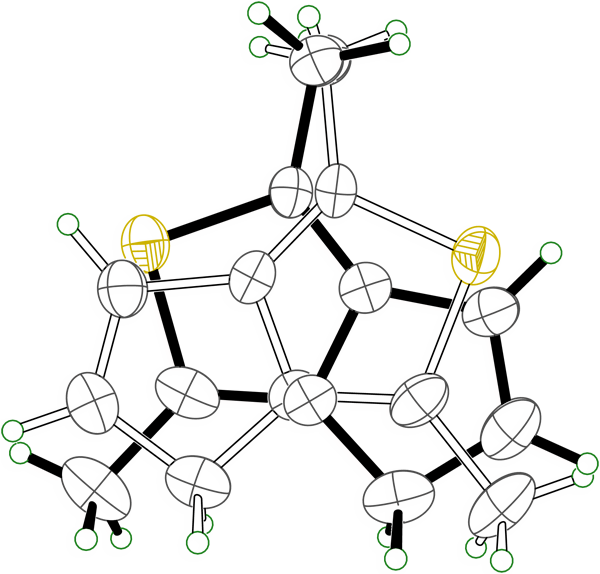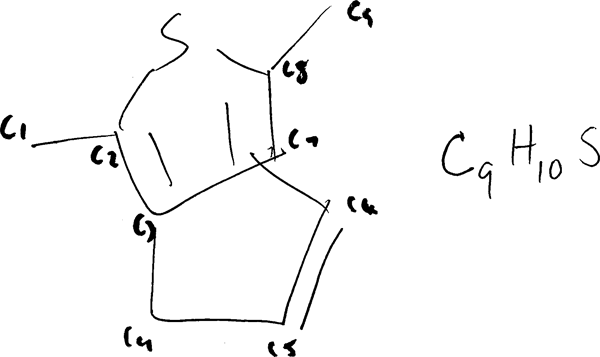Whole-Molecule Disorder in SHELXL
Note: This tutorial uses older programs: shelxs, shelxl97, and shelxtl XP.
Some crystals exhibit disorder in which the whole molecule has two (or more!)
orientations on the same site in different unit cells. This can happen if the
two orientations are about the same shape when overlayed. It implies that there
must be similar intermolecular interactions for the two, as the energy penalty
for incorporating other orientations must dictate the occupancy factor for each
component. This tutorial describes one such compound, C
9H
10S.
The
dataset and
nreport files allow you to follow along.
Before delving into the problem it is worth noting that a likely structure was
suggested by the supplier of the sample. The following had been scribbled on
the submission sheet:
With this information, it was suspected that the molecule might be disordered about a
two-fold axis running roughly along S to C5; an operation that would scramble the C4-C5
single and C5=C6 double bonds. It turned out to be a bit more complicated, but the
structure is quite small, and so provides a good example to show whole-molecule disorder.
There is rather less detail on what commands to enter in this tutorial compared to the
sucrose and sorbose tutorials. That's because you should pick up and retain
details as you progress. If something is unclear, you could go back to the relevant
section of a more elementary tutorial for a refresher.

